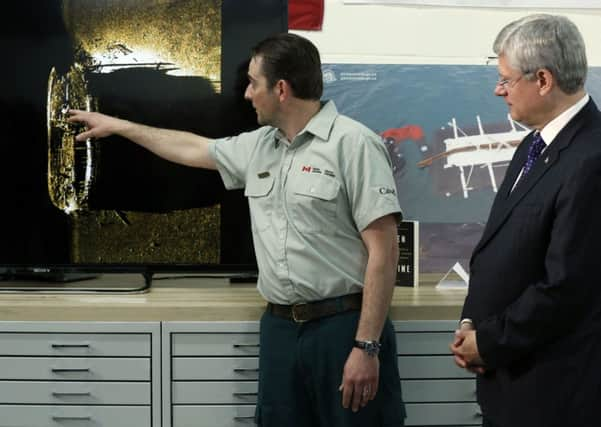Franklin Arctic exploration ship found


The HMS Erebus and HMS Terror were last seen in the late 1840s.
Prime Minister Stephen Harper said it remains unclear which ship has been found but images show there is enough information to confirm it is one of the pair.
Advertisement
Hide AdAdvertisement
Hide AdFranklin and 128 hand-picked officers and men vanished on an expedition begun in 1845 to find the fabled Northwest Passage.
His disappearance prompted one of history’s largest rescue searches, from 1848 to 1859, which resulted in the passage’s discovery.
The route runs from the Atlantic to the Pacific through the Arctic archipelago.
“This is truly a historic moment for Canada,” said Mr Harper. “This has been a great Canadian story and mystery and the subject of scientists, historians, writers and singers so I think we really have an important day in mapping the history of our country.”
Mr Harper’s government began searching for Franklin’s ships as it looked to assert Canada’s sovereignty over the Northwest Passage, where melting Arctic ice has unlocked the very shipping route Franklin was after.
The original search for the ships helped open up parts of the Canadian Arctic for discovery back in the 1850s.
Mr Harper said the ship was found on Sunday using a remotely operated underwater vehicle.
The discovery comes shortly after a team of archaeologists found a tiny fragment from the Franklin expedition. Searchers discovered an iron fitting that once helped support a boat from one of the doomed expedition’s ships in the King William Island search area.
Advertisement
Hide AdAdvertisement
Hide AdFranklin’s vessels are among the most sought-after prizes in marine archaeology. Mr Harper said the discovery would shed light on what happened to Franklin’s crew.
Tantalising traces have been found over the years, including the bodies of three crewmen discovered in the 1980s.
The bodies of two English seamen - John Hartnell, 25, and Royal Marine William Braine, 33 - were exhumed in 1986. An expedition uncovered the perfectly preserved remains of a petty officer, John Torrington, 20, in an ice-filled coffin in 1984.
Experts believe the ships were lost in 1848 after they became locked in the ice near King William Island and that the crews abandoned them in a hopeless bid to reach safety.
The search for an Arctic passage to Asia frustrated explorers for centuries, beginning with John Cabot’s voyage in 1497. Eventually it became clear that a passage did exist, but was too far north for practical use. Cabot, the Italian-British explorer, died in 1498 while trying to find it and the short cut eluded other famous explorers including Henry Hudson and Francis Drake.
No sea crossing was successful until Roald Amundsen of Norway completed his trip from 1903-1906.